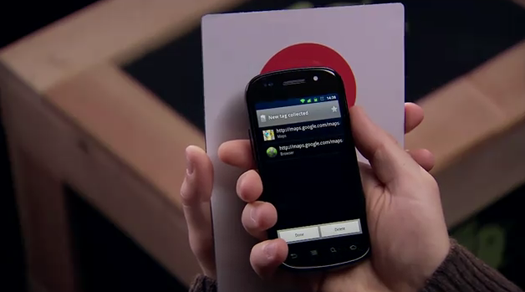Mobile Paths: Android Nexus S and Near Field Communication
During last month’s Web 2.0 Summit in San Francisco, Google CEO Eric Schmidt announced the next iteration of Android's operating system would come with near field communication baked-in at its core. This week, Google came through on its promise. Along with a slick new skin, dual camera functionality, and Contour Display, the Nexus S establishes itself as the first Android device to sport NFC technology. It is a sign of what is to come; the Nexus S is the first of many next-gen devices that will influence everything from business to marketing and consumer behavior.
What is NFC?
Near field communication is a short-range wireless technology that enables devices to talk to one another. It is yet another sense for our mobile phones, making them increasingly sentient and allowing them to make our lives easier. It is similar to Bluetooth, Bump, or even QR codes in that it enables interactivity between personal and public devices or objects. While NFC has been around for a while, most notably as FeliCa in Japan, it is only now beginning to gain traction in the United States.
iPhone RFID: object-based media from timo on Vimeo.
What can NFC do?
According to NFCWorld, the Nexus S, in its current state, can only read (not write to) RFID tags. This means that NFC will begin as a simple improvement on existing barcode readers. RFID tags are cheap and cost only cents to produce, meaning they can be embedded in just about anything. By waving a Nexus phone in front of a "smart" poster or t-shirt, users will be able to access complementary content. This is a lot easier than downloading an app, launching it, aligning with a barcode, and scanning. NFC only requires one action. As part of its integration with Gingerbread, the Nexus S also bookmarks tagged items and lets users star their favorites.
It’s only a matter of time before developers tap into Gingerbread for more advanced read/write NFC-based interactivity. The most obvious application will be mobile payments, which will finally become a reality. AT&T, Verizon, and T-Mobile recently announced its joint effort in creating Isis -- a mobile payments system. Banks like Wells Fargo have been piloting mobile payment systems as well; they've partnered with Visa to activate phones using either NFC chip or protective case. PayPal is already partnering with brands like Starbucks and is experimenting with NFC through a startup called Bling Nation. We’re guessing that startups like Venmo will reposition (or pivot) around this new reality.
The possibilities for read/write NFC are endless; they include probable applications such as ticketing, couponing, loyalty, and identification. Our keys, wallet, and phone will continue to converge into one master device (one that you won’t want to lose!). Thanks to NFC, the phone will become a mnemonic device and your digital identity. Creatives will use this to push boundaries in entertainment and play; product development teams will begin to integrate RFID into everything from children’s toys to digital cameras. Your phone could soon sense your tablet or netbook and turn off notifications accordingly, making for a more intelligent ecosystem of screens.
Wireless in the world 2 from timo on Vimeo.
How do we approach NFC?
We should think about NFC as one of many paths to interacting with the world around us. QR codes, audio recognition, and search are all mobile paths that link us to the "Outernet", or the cloud-based Internet outside our desktop and overlaying reality. While observing these technologies develop, we've noticed that each is positioning itself for different use cases. Shazam may be best for time-based media like radio or television while Google Goggles works for distance. NFC is all about proximity. In fact, to access information using NFC, a user has to wave his or her phone a minimum of four inches away from a tagged object. This makes it the most intimate, close-up, and personal of mobile paths. Understanding these interactions will allow us to better place them in a user's everyday life.
For brands, it is important not only to understand this new technology, but also to keep people front and center. Mobile phones and NFC serve consumers based on deep and long existing motivations. Understanding these as well as the NFC experience will allow for successful application, and the Nexus S is a great place to start.















